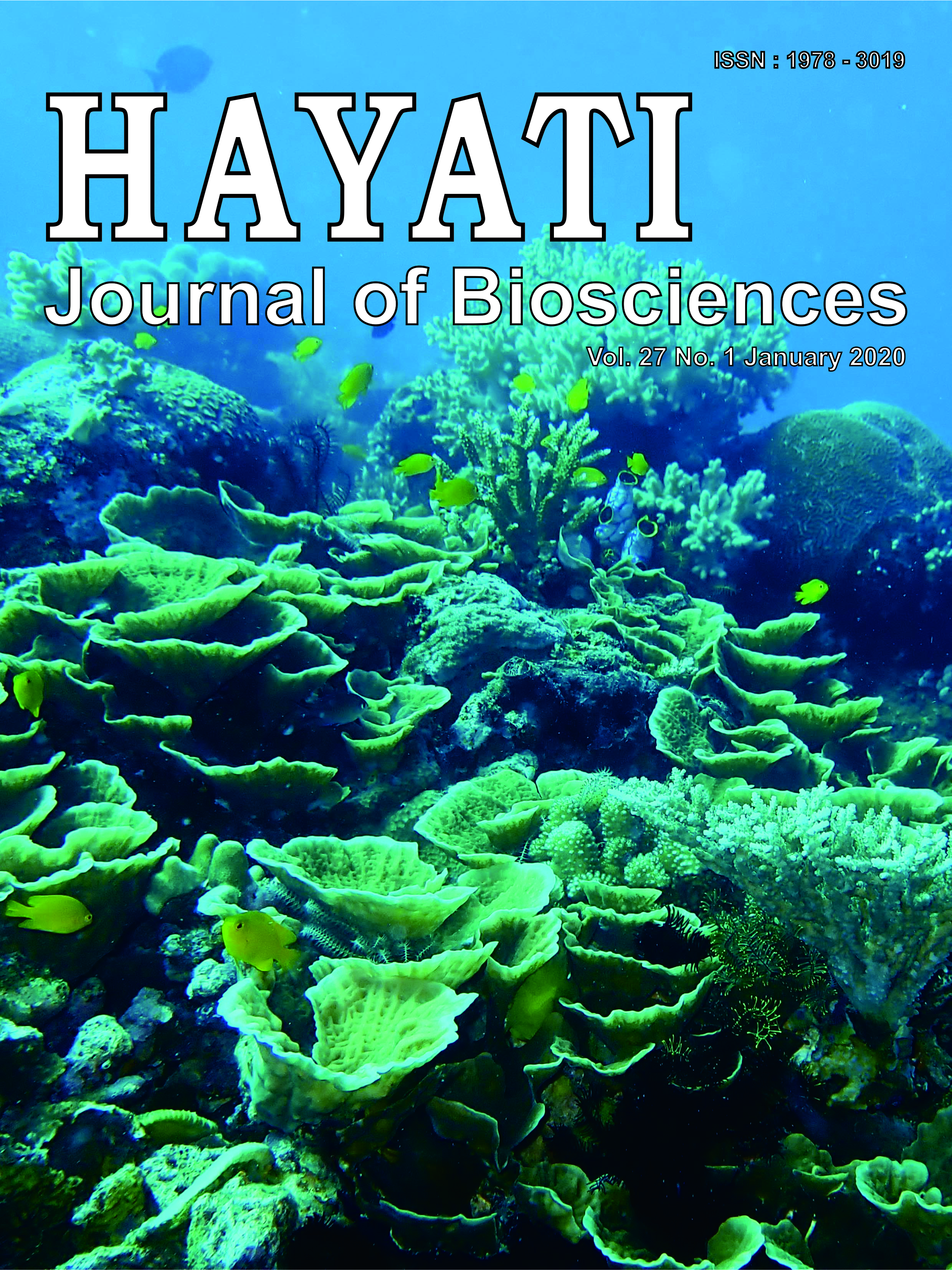Adaptation Selection of Plants for Utilization in Phytoremediation of Soil Contaminated by Crude Oil
Abstract
The research on adaptation selection for utilization in phytoremediation of soil contaminated by crude oil using four type plants, such as Helianthus annuus, Paspalum conjugatum, Sorghum bicolor, and Tagetes erecta were conducted. The adaptability of four types of plants on crude oil contaminated soil at total petroleum hydrocarbon (TPH) level at 0, 3, and 6% were observed and evaluated to their morphological and anatomical responses. Parameters observed were vegetative growth of plants including growth precentage, plant height, number of leaves, root length, root dry weight, shoot dry weight, root/shoot ratio, total dry weight, and stomatal density for 9 weeks cultivation in screen house. The results show that increasing in TPH level caused in significant reductions on morphological of four plants, such as percentage of plant growth, plant height, number of leaves, root length, root dry weight, shoot dry weight, and total dry weight. In contrast, the increasing in TPH level caused to increasing in root/shoot ratio. The four types of plants studied were effective to be used as plants for phytoremediation of petroleum contaminated soil. The plants of P. conjugatum and S. bicolor are recommended as phytoremediators for further studies.
Downloads
HAYATI J Biosci is an open access journal and the article's license is CC-BY-NC. This license lets others distribute, remix, tweak, and build upon author's work, as long as they credit the original creation. Authors retain copyright and grant the journal/publisher non exclusive publishing rights with the work simultaneously licensed under a https://creativecommons.org/


















.png) IPB University
IPB University Department of Biology
Department of Biology The Indonesian Biological Society
The Indonesian Biological Society 

